The Pierrepoints: A Deadly Family Business
In 1810 Sir Samuel Romilly, former Solicitor General, told the House of Commons “There is no country on the face of the earth in which there are so many different offences according to law to be punished with death as in England.” In 1688 there had been 50 offences punishable with the death penalty. By the beginning of the 19th century there were 220. [1] Thanks to Romilly’s efforts, the number of crimes punishable by death began to decline, and by 1861 there were only five crimes that merited death: murder, treason, espionage, arson in royal dockyards, and piracy with violence. Of these, however, murder and treason carried a mandatory death penalty (unless the person was pardoned, that is). This brought a new prominence to the role of the official executioners – they were still required to be available to carry out these executions, but there was hardly enough of a steady stream of work to make them salaried employees. Instead, therefore, in 1884 they became independent contractors. The official power to carry out the punishment was granted to the Sheriff of a county, with the ability to invite someone to be deputised to carry it out for him. The Home Office maintained a list of those who could be invited to carry it out. The pay was not excessive – £10 per execution, which had remained static since the 19th century (it would eventually be raised to £15 in the 1940s). [2] Yet still there was fierce competition to get onto the Home Office list.
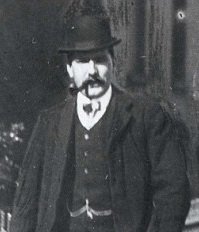
Henry Pierrepoint was one of those competing for a place. He’d been born in 1878 in the small village of Normanton on Soar, though his family had moved to Bradford when he was a child. Henry had worked as a mill worker and as a cabinet maker, but it was a magazine article he read on the hangman system that showed him the path to respectability. To him, becoming a hangman was a means to an end – a ways to raise his position in society. So he wrote his letters, and in 1901 he was told that he had been accepted onto the list. That November he participated in his first hanging as an assistant to James Billington. James was an experienced hangman, and the first to see it as a family trade – there were seven names on the Home Office list at the time, and three of them were Billingtons. All three of his sons eventually also became hangmen. James died soon after Henry Pierrepoint began work, as did one of his sons, but Henry acted as an assistant to the two survivors for the next few years. [3] By 1905, Henry had become the primary hangman for England and carried out all of the executions that year. (There were only eight – a far cry from the thousands of a century ago). Perhaps inspired by the Billingtons, he began suggesting to his brother Thomas that he also apply to be on the list, reportedly demonstrating the work to him with a bag of grain in a shed. Thomas applied, and was accepted in 1907. In the same year Henry executed Rhoda Willis, a 44 year old woman who had murdered a baby she had adopted for money. This execution was apparently where the job began to take its toll on Henry. His career ended in 1910, when he turned up drunk to an execution. He was immediately removed from the List.
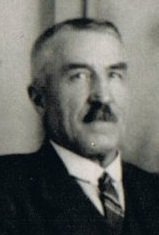
Thomas, it appears, took to the trade he had been reluctantly drawn into even better than his brother. He spent 39 years on the List, longer than anyone else in its history. [4] In addition to his work for the Home Office he received several outside appointments – he was the official executioner for the Irish Free State after it was established in 1922, and carried out the death sentence 28 times at Mountjoy prison. He was also an official executioner for the US Military in Europe, and during World War 2 he hanged 16 US servicemen at their base in Shepton Mallet. (Most were executed for rape, which was a capital offence under US military law at the time.) The one blot on his record was an instance in 1927, when he and a fellow hangman were reprimanded by the Home Office for writing letters to offer their services to carry out an execution. The code of conduct the hangmen were held to implicitly forbade them to tout for business, but Tom claimed that he had merely done so because he knew the other man, Robert Baxter, was doing so. [5] The code was revised to explicitly ban the practise.
Henry Pierrepoint’s son Albert grew up in the shadow of the gallows. His father looked back on his nine years in the trade as a highlight of his life, while his uncle was the most respected hangman in the country. Albert idolised his uncle, and when he stayed with his aunt and uncle his aunt would let him read Thomas’ work diaries. As a child at school in 1916 Albert wrote an essay entitled “When I Grow Up I Would Like To Be The Official Executioner”. The following year, at the age of twelve, he left school and went to work in the mill. His father died in 1922, and Albert inherited his diaries and notes on the craft of hanging, which he read voraciously. By 1931 he had become a delivery driver, and that April he finally wrote to the Home Office volunteering to be a hangman. They wrote back to tell him there were no vacancies, but towards the end of the year one of the hangmen on the list asked to be removed. Albert was invited for an interview, and impressed the authorities enough to get the place.
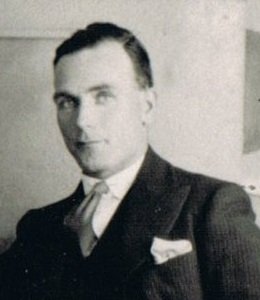
Albert’s first job was in Ireland, assisting his uncle Thomas. His father and Thomas had avoided telling him the real reason why his father had been removed from the List, but Thomas’ advice to him was uncompromising. It was the custom in Ireland to offer both the condemned man and the hangman a drink, but Thomas advised him “if you can’t do it without whisky, don’t do it at all”. It was advice he would take to heart, and it helped to account for his long career. Nothing got a man removed from the List faster than drunkenness. Albert spent nine years as Tom’s assistant (and continued to assist him at Shepton Mallet until the end of the Second World War).
In 1941 he performed his first execution as lead hangman. The condemned man was Antonio Mancini, a notorious East End gangster. Antonio had knifed a man in self defence and had expected to get a verdict of manslaughter. It was clear that his sentence owed more to his position as an underworld crime boss, combined with the desire of the government to clamp down on war profiteers. Still, Antonio seemed to have resigned himself to his fate, and Albert reported that he said “Cheerio!” as the lever was pulled. Albert’s second execution was a much messier affair. Karel Richter was a Czech who had tried to escape from German territory to reunite with his girlfriend and son in America, but been caught crossing the border and imprisoned. The Germans had offered him to option to commute his sentence through service as a spy, and he had accepted. After some training he had been parachuted into England, with the task of checking on another spy that the Germans suspected had been turned. [6] Unfortunately his complete lack of tradecraft led to his swift arrest, and after a military trial he was sentenced to death. Karel vowed to die “as a man”, and he made life very difficult for Albert. When the guards entered his cell Karel repeatedly ran headfirst at the wall, and when the guards restrained him he broke his bonds and attacked them. Eventually four guards overpowered him and carried him to the gallows, where he was bound hand and foot with a hood over his head and the noose around his neck. As Albert pulled the lever, Karel tried to leap clear, but failed. Albert was horrified to notice that the noose had slipped from his neck, though it caught on his nose under the hood. Luckily for Albert he had worked out the length of rope perfectly, and the jerk to Karel’s head was enough to break his neck and kill him instantly.

It was definitely the most trying execution Albert had ever taken part in, but his mettle seems to have impressed the authorities. Perhaps it was this, or perhaps it was his having assisted his uncle at Shepton Mallet that led to him being chosen to go to Nuremberg. As a military executioner for the Allied Armies his uncle would have been the logical choice, but he was 75 years old and had been effectively retired by the Home Office. So in December 1945 Albert flew out to Germany. He left behind a wife – Annie Fletcher, the girl who had run the sweet shop next to the grocers where he had his “day job”. Albert had not told Annie about his other profession, and it was six months after their wedding before he confessed. Annie, of course, had known all along. It was with her blessing that he went to Nuremberg.
The first trial at Nuremberg had been of those who had run the concentration camps at Auschwitz and Belsen. Forty-five men and women had been put on trial. One was too sick to stand trial, fourteen were acquitted and eighteen were sentenced to terms in prison. One was sentenced to prison, but also faced a civil trial for murder (for which he was executed by the German authorities). Eleven were sentenced to death, and two who had been convicted of murdering a captured RAF pilot joined them. On the 13th December 1945 Albert Pierrepoint hanged them all. He also carried out the executions of others convicted of war crimes in various trials over the next four years, and by 1949 he had executed 202 people on the continent (as well as several convicted of treason back home, such as William Joyce). The press managed to discover his identity, and he became a strange kind of national hero. Tales of the horrors found in the camps and of the atrocities perpetrated by the Nazi forces ensured there was little sympathy for those at the end of his rope. [7]
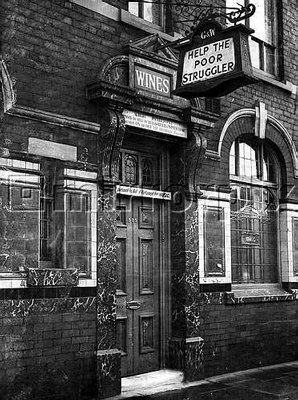
Albert was paid handsomely for his work in Germany, and the money allowed him and Annie to buy a pub in Hollinwood, just outside Manchester. Tourists came to be served a pint by the man who had hanged the Nazis, while his regulars soon came to see the human side of the “Official Executioner”. It was in 1950 that Albert had one of his most difficult executions. He turned up at Strangeways prison in Manchester to hang James Corbitt for the brutal murder of his girlfriend. The name was unfamiliar to him, but he immediately recognised the man as one of his regulars, and later realised that Corbitt had even got drunk at his pub before he went home to commit his crime. It was the first time the job ever got to him, and it probably contributed to the end of his career. Equally contributing, however, was the changing public attitude towards the death penalty. It became more and more common for people to be reprieved, and those that were not became more and more cause for controversy. The execution in 1953 of Derek Bentley for conspiracy to the murder of PC Sidney Miles caused public outcry, and among others the widow of Miles and two hundred members of Parliament all called for his reprieve. The times were changing – in 1954 Albert hanged the last man to receive the death sentence in the Republic of Ireland (Michael Manning, a rapist and murderer) and in 1955 he hanged the last woman to receive the death sentence, Ruth Ellis. Her execution for the murder of her lover was also controversial, with many feeling that her behaviour in court was deliberately calculated to ensure she received the death sentence. In this atmosphere, reprieves became more and more common and it was a reprieve in January of 1956 that prompted Albert’s resignation.
The dispute was simple enough – Albert turned up at Strangeways to carry out an execution, but midway through his preparations he was told that the prisoner had been reprieved. The under-Sheriff then told him that as no execution had been carried out he was entitled to no fee, though he was willing to give him £1 for his time. Albert was insulted, and demanded the full £15. When the Home Office refused to back him up, he tendered his resignation. Things may not have been so clear cut, however. Shortly after the Home Office wrote to him asking him to reconsider (the only time they ever did so for any hangman) they discovered that he had agreed to sell his story to the newspapers. They considered prosecuting him under the Official Secrets Act, but instead simply pressured the newspapers in question to cease publication of the articles after the first few. As a result Albert still received his payment – perhaps a final gift from the government, in recognition of his long service.
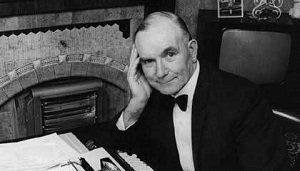
The last hanging in the United Kingdom took place in 1965. Nine years later, in 1974, Albert published his memoirs. Executioner Pierrepoint was a bestseller, and remains in print to this day. In the conclusion to the book, Albert admits that while he never felt that the hangings he carried out were unjust, he had come to believe that capital punishment was not an effective deterrent to criminals.
“It is said to be a deterrent. I cannot agree. There have been murders since the beginning of time, and we shall go on looking for deterrents until the end of time.”
“I have come to the conclusion that executions solve nothing, and are only an antiquated relic of a primitive desire for revenge which takes the easy way and hands over responsibility for revenge to other people.”
“The trouble with the death penalty has always been that nobody wanted it for everybody but everybody differed about who should get off.”
Whether these were his true beliefs, or a calculated ploy to boost sales, we’ll never know. The book earned enough that Albert and Annie were able to retire to Southport. There he spent his twilight years in peace. In 1992 he died, aged 87. Two weeks earlier the last death sentence in the UK had been handed down in the Isle of Man, to a man named Tony Teare found guilty of the contract killing of a young woman. The Queen exercised her royal prerogative to commute the sentence, and Teare was instead sent to prison for life. The following year the Isle of Man abolished the punishment, and by 1998 there were no crimes that carried the death penalty in the United Kingdom. The era of the hangmen had come to an end.
Images via wikimedia except where stated.
[1] Notable examples of crimes punishable by death were wearing a disguise to commit a crime, spending more than a month travelling with Gypsies, and “strong evidence of malice in a child aged 7–14 years of age”. Stealing anything valued at more than a shilling was also a potential ground for death.
[2] Half was paid at the time, half two weeks later (provided the hangman had shown appropriate discretion).
[3] In 1904 William Billington was struck off the list for letting his wife and children be put into a workhouse, and in 1905 John Billington died of injuries sustained when he fell off a scaffold.
[4] The longest serving hangman was William Calcraft, who was in office from 1829 to 1874, a full 45 years. Calcraft predated the List however – he was a salaried Government employee.
[5] Baxter became infamous the following year for an accident involving his assistant Alfred Allen. Baxter was blind in his left eye and did not realise that Allen was still standing on the trapdoor when he pulled the lever. Allen survived the fall, and Baxter continued to perform hangings for another seven years.
[6] In this they were correct. In fact the British had turned or captured all of the German spies in Britain, thanks in large part to Nathalie Sergueiew and Roger Grosjean, two French agents who allowed themselves to be recruited by the Germans and immediately started to double for the British.
[7] Pierrepoint was not the only executioner employed to hang Nazi war criminals. One notable executioner was John C Woods, a US private from Kansas who had been discharged from the Navy for incompetence in 1930, but re-recruited in 1943 due to the war. He secured a promotion to Master Sergeant by lying about having experience as a hangman and became notorious for botching hangings with too short a drop. In 1950 he accidentally electrocuted himself while working on an electrical lighting repair.
